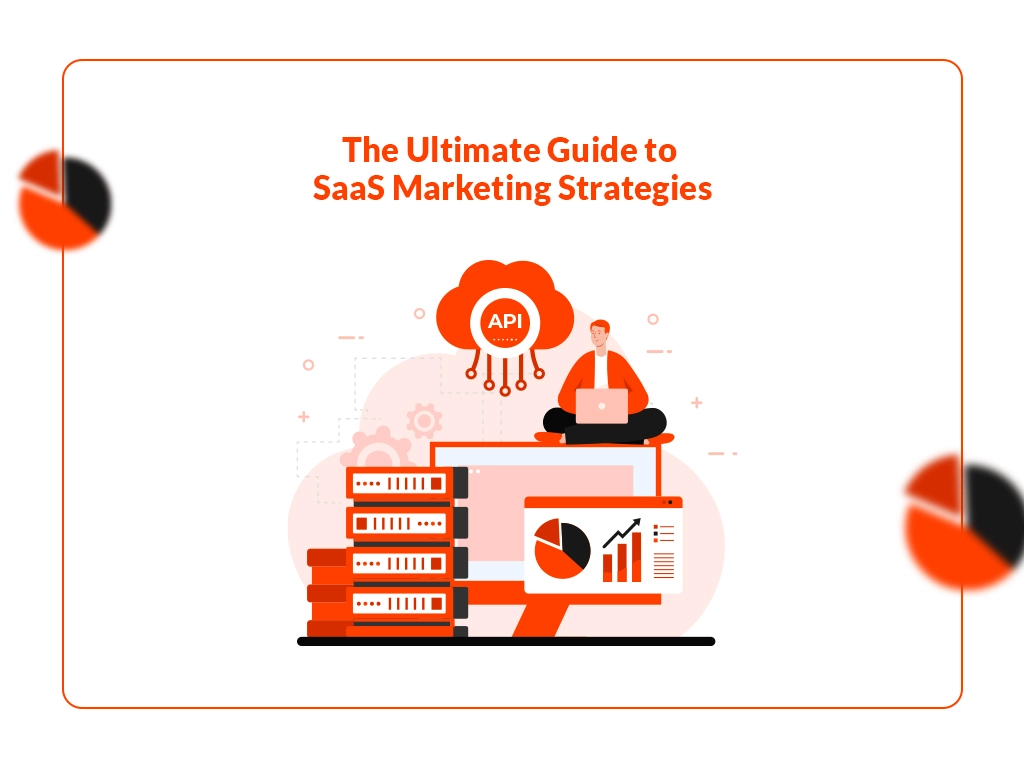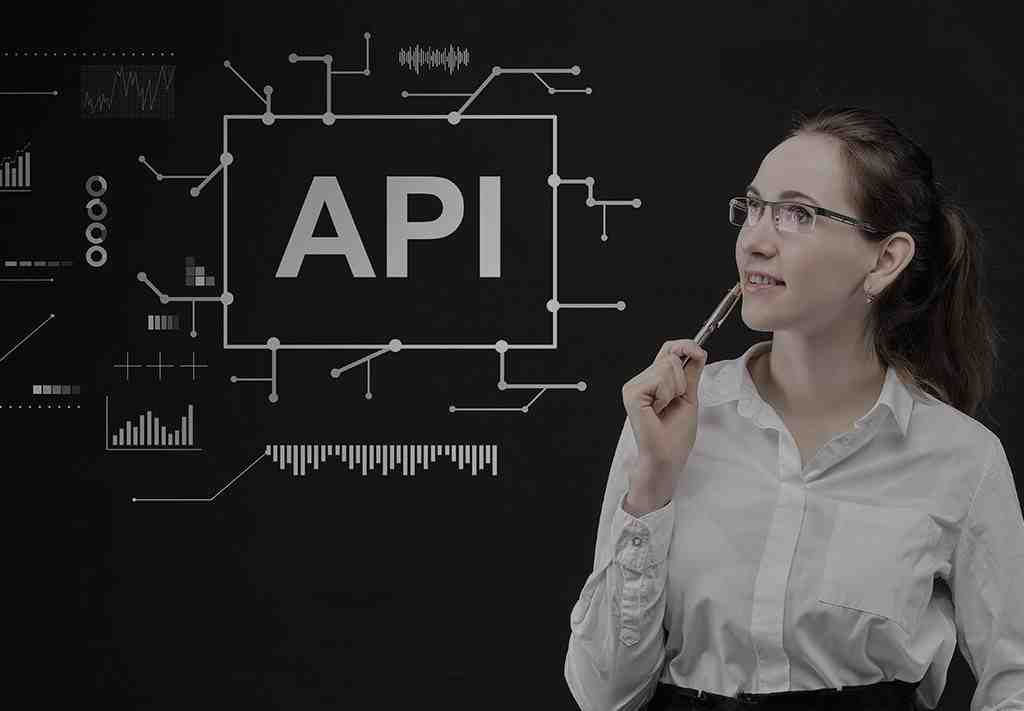The Ultimate Guide to SaaS Marketing Strategies
Discover key SaaS marketing strategies like lead generation, content marketing, and retention to grow your subscription business and drive success.

Ready to elevate your SaaS business and drive real results? In the highly competitive tech hubs like San Francisco and New York, the most successful SaaS leaders aren’t searching for basic solutions—they’re looking for advanced, proven strategies that truly impact customer retention, lead generation, and brand visibility. Regardless of your role whether it may be a creative product lead, an experienced marketing manager, or an aspirational entrepreneur, then this guide will cover the strategies that could offer your SaaS company the growth and success that it deserves. Now let’s get going!
Understanding SaaS Marketing Fundamentals
SaaS marketing differs from traditional product marketing by focusing on subscription-based models and ongoing customer relationships. Key metrics like Customer Acquisition Cost (CAC), Customer Lifetime Value (CLV), and Monthly Recurring Revenue (MRR) are vital. Optimizing CAC involves ensuring a favorable LTV to CAC ratio, typically 3:1. Implementing effective B2B Demand Generation services can help attract high-quality leads, thereby improving this ratio and driving sustainable growth. By prolonging customer lifecycles and by minimizing churn, CLV boosts profitability and efficient strategies include leveraging personalized onboarding, freemium models, and trials. Behavior tracking and advanced data analytics such as cohort analysis and predictive churn models assist in enhancing retention and renewals and identifying expansion opportunities. The goal is sustainable growth with low churn and high retention.
SaaS Marketing Strategy Case Study: HubSpot
SaaS marketing differs from traditional product marketing by focusing on subscription-based models and ongoing customer relationships. Key metrics like Customer Acquisition Cost (CAC), Customer Lifetime Value (CLV), and Monthly Recurring Revenue (MRR) are vital. Optimizing CAC involves ensuring a favorable LTV to CAC ratio, typically 3:1. By prolonging customer lifecycles and minimizing churn, CLV boosts profitability and efficient strategies include leveraging personalized onboarding, freemium models, and trials. Behavior tracking and advanced data analytics such as cohort analysis and predictive churn models assist in enhancing retention and renewals and identifying expansion opportunities. The goal is sustainable growth with low churn and high retention.
Problem Statement:
HubSpot came across many challenges in reducing acquisition costs and acquiring new customers while maintaining high user retention. With increasing competition in the SaaS space, they are required to find a strategy that would efficiently attract and convert leads by also nurturing long-term customer loyalty.
Solutions Implemented:
- Inbound Marketing: To engage users and generate leads, HubSpot generates informative content such as blogs, eBooks, and webinars. They also prioritized SEO and educational resources, which helped them establish credibility and drive traffic to their platform.
- Freemium Model: They provide a free version of their software to engage users and to show the value of their product by encouraging upgrades to paid plans.
- Customer Success Campaigns: To reduce attrition and guarantee smooth user experiences, comprehensive onboarding and support programs were implemented.
- Results: HubSpot’s strategies led to increased web traffic, a steady flow of qualified leads, and a robust customer base. By focusing on content and customer success, they significantly reduced their cost of acquisition, enhanced user retention, and demonstrated the effectiveness of content-driven and customer-centric marketing approaches.
Why SaaS Marketing is Unique?
Because of its subscription model, which emphasizes both customer acquisition and retention to generate long-term revenue, SaaS marketing is unique and to ensure users renew their subscriptions, businesses must prioritize customer success through personalized onboarding, robust support, and regular updates. SaaS marketing strategies, such as content marketing, free trials, and data-driven insights, are essential due to the dynamic nature of SaaS products and complex customer journeys, helping to generate awareness and engagement. A lack of marketing hierarchies is the main struggle for smaller SaaS companies, which negatively impacts customer success and retention—two critical factors for growth.
SaaS Lead Generation Strategies That Work
Lead generation is important for any marketing strategy, and SaaS lead generation strategies must be accurate to engage high-quality leads. One proven method is providing freemium to premium conversion models, where users can get the service for free before buying a paid plan. Other tactics include these strategies to grow your SaaS business.
-
Content marketing:
Sharing creative insights through blogs, videos, and webinars not only builds trust but also makes your brand popular. For example, an informative white paper can engage decision-makers like CIOs or CTOs who want to adapt to new SaaS solutions.
-
SEO strategies:
Completing SaaS keyword research and then optimising your website for your website’s SaaS-related keywords ensures your brand appears in search results when potential customers are researching solutions.
We at Valasys Media are known for our conventional lead generation deliveries, full-funnel programs and demand generation campaigns. What more? Our all new Valasys AI, a data insight, interpreter and data discovery platform is ideal for all lead generation requirements. You can let your in-house team churn out leads from the Valasys AI database while our team will deliver over & above leads at reduced CPLs.
Make sure your lead generation strategy aligns with your SaaS marketing strategies and sales funnel. For example, top-of-funnel content should address broad questions, while middle and bottom-funnel content should focus on specific features and benefits of your SaaS product.
Building Trust with Prospects with SaaS Content Marketing
SaaS content marketing is essential for engaging and retaining potential customers. Here’s how to efficiently apply SaaS-specific strategies:
1. Influencer Reviews:
Collaborate to review and deploy your SaaS product. Influencers can provide authenticity and third-party validation which helps to foster trust with potential customers who respect expert advice.
2. B2B Summits and Trade Shows:
Participating in industry-specific summits and trade shows to display your SaaS product at these events allows you to showcase its capabilities live, engage directly with decision-makers, and foster relationships with potential customers.
3. Case Studies and Product Demos:
Develop detailed case studies and offer live product demos. These showcase how your SaaS solution addresses real-world challenges, providing concrete evidence of its value.
Mastering the SaaS Sales Funnel
An optimized sales funnel guarantees an effortless progression from lead generation to conversion. The SaaS sales funnel is a meticulous process for guiding prospects from awareness to conversion. To achieve this, emphasize on:
- Awareness: Creating engaging content like blogs and social media posts to attract users.
- Consideration: Share more detailed content like eBooks, demos, and comparison guides.
- Decision: Provide direct calls to action like “Start a Free Trial” or “Book a Demo” to encourage conversions.
Effective SaaS marketing strategies align content at every stage of the sales funnel.
Example: HubSpot’s Sales Funnel Strategy
1. Awareness:
HubSpot, a well-known SaaS provider in sales, marketing, and CRM software succeeds in drawing potential customers with several content marketing strategies and they create engaging content such as blogs, infographics, posts, and social media updates on topics related to sales strategies, inbound marketing, and customer relationship management. Their blog is a significant resource for practical tips and industry insights drawing in users interested in these subjects.
2. Consideration:
Potential leads enter the consideration stage after learning about HubSpot. HubSpot cultivates these leads by providing deeper resources. This includes eBooks on topics like comprehensive webinars, email marketing, lead generation, and detailed comparison guides that help potential customers weigh their options and requirements. To demonstrate the value of their solutions, they also provide case studies that highlight the achievements of their current clients.
3. Decision:
In the decision stage, HubSpot aims to convert interested prospects into customers. They use targeted calls to action such as “Start Your Free Trial” or “Book a Demo,” especially on their website and in their emails. They also provide personalized consultations to acknowledge specific queries and offer tailored solutions which makes it simple for prospects to take the next step, HubSpot efficiently converts leads into customers.
4. Conclusion:
One example of how a SaaS company can assist prospects through the purchasing process is HubSpot’s use of the sales funnel. They ensure a smooth transition from awareness to a decision via a strategy that matches content to each funnel stage. In addition to drawing in new leads, this strategy nurtures existing ones with valuable content and compelling calls to action which eventually increases conversions.
Reducing Customer Acquisition Cost (CAC) Add more details.
Minimizing Customer Acquisition Cost (CAC) is important for SaaS companies that want to increase profitability, drive sustainable growth, and achieve cost efficiency needs a multifaceted strategy that targets the appropriate audience, improves conversion rates, and leverages automation. Let’s discover these in more detail:
1. Targeting the Right Audience:
Prioritizing qualified leads with the highest conversion rates is essential. Powerful targeting tools are available to reach particular decision-makers, including marketing managers, CIOs, CTOs, and operations managers, via platforms like LinkedIn and specific ad networks. By zeroing in on senior professionals you grow the chances of higher-value conversions. Execute Account-Based Marketing (ABM) strategies to refine targeting and prioritize high-potential accounts by making your marketing spending more effective.
2. Improving Conversion Rates:
The goal is to convert leads faster while ensuring they see value immediately. Offer interactive demos and personalized trials that showcase real-world applications of your SaaS solution. Additionally, streamlining the onboarding process with automated tutorials and guided tours can help users quickly grasp the product’s value, reducing the sales cycle and encouraging quicker decision-making.
3. Leveraging Automation:
Email campaigns, follow-ups, and lead nurturing can all be automated with marketing automation tools like HubSpot, Pardot, and Marketo. As a result, less manual labor is required, and mass-customized, timely outreach becomes possible. By prioritizing leads according to their likelihood of converting, AI-driven lead scoring can help to ensure that your sales team focuses on high-quality prospects and drip campaigns, retargeting advertisements, and personalized outreach can all be automated to maximize touchpoints, reduce expenses, and increase efficiency.
4. Referral and Affiliate Programs:
In the SaaS industry, word-of-mouth marketing is important. By executing incentive-based referral programs to attract new users. You can minimize the amount of money you need to spend on advertising by leveraging your existing customer base. By with complementary businesses or industry influencers, affiliate marketing can also be a cost-effective means of increasing client acquisition.
5. Analyzing Data and Optimizing Spend:
Continuously track and analyze CAC-related metrics through A/B testing, cohort analysis, and performance monitoring. Use these insights to reallocate budget towards campaigns, channels, and tactics that consistently yield lower acquisition costs.
SaaS Customer Retention Strategies Add more details.
While acquiring new clients is essential for growth, keeping existing customers is even more crucial for long-term success. By reducing churn rates and increasing Customer Lifetime Value (CLV), retention boosts profitability. Let’s discover more closely into SaaS customer retention strategies:
1. Onboarding:
A seamless onboarding process sets the standard for a user’s complete experience with your SaaS product in general. Offering interactive product tours, in-app tutorials, and step-by-step onboarding flows helps users identify important features right away and live onboarding sessions can offer high-touch clients who need a customized approach to additional self-service support, while comprehensive user guides and video tutorials provide additional self-service support. Moreover, using email automation to generate check-ins or educational content based on the user’s progress makes sure they remain engaged during the early stages of adoption.
2. Customer Success Programs:
SaaS businesses succeed in long-term relationships and customer success programs are important for building these. Assign dedicated Customer Success Managers (CSMs) to high-value accounts to monitor usage patterns, proactively address concerns, and offer customized recommendations. A daily check-in with customers to gather feedback, understand their pain points, and provide solutions before they consider switching to a competitor. Using predictive analytics to track consumer behavior can assist in identifying warning signs of churn ( for example:- reduced usage, and long periods of inactivity ), allowing your CSM team to intervene early with targeted retention campaigns.
3. Upselling and Cross-Selling:
Particularly after your base product has satisfied customers, cross-selling and upselling can increase their lifetime value. Make tailored product recommendations based on their data usage and demonstrate to them how add-ons or premium features can improve their workflows or address specific problems. For instance, if a user’s storage is running low, suggest an upgraded plan with more space and present cross-selling opportunities by showing add-on tools or services that provide value without affecting their existing SaaS solution.
4. Proactive Customer Engagement:
Build ongoing relationships with customers through proactive communication. Implement email drip campaigns that provide tips, product updates, and best practices that keep users engaged with your product. Host webinars, exclusive workshops, and Q&A sessions that emphasize assisting your customers to get the most out of your platform. Engaging through community forums, social media, or user groups also assists create a sense of belonging, inspiring customers to remain trustworthy with your brand.
5. Loyalty and Referral Programs:
Provide discounts, first access to new features, or tailored services based on usage milestones or tenure to reward loyal customers through loyalty programs and you can also transform satisfied customers into advocates by putting in place referral programs. By offering discounts or incentives for introducing new customers, you can nurture a successful cycle of expansion and retention. By generating more leads and reducing the cost of customer acquisition, these SaaS marketing strategies not only increase customer satisfaction but also nurture organic growth as loyal customers turn into valuable promoters.
6. Churn Reduction Tactics:
Analyze survey results, support ticket histories, and engagement data to identify at-risk customers early. Retention incentives, like discounts, premium features, or free trials of targeted outreach, may help in gaining back customers at the moment of customer churn and conduct exit interviews to know why customers are leaving and then use the information to improve your services. The profitability and long-term growth of your company rely on these SaaS marketing strategies’ ability to reduce customer attrition and boost retention.
7. Continuous Product Improvement:
Product satisfaction is closely tied to retention. Collecting consumer feedback regularly by the use of feature request forums, Net Promoter Score surveys, and other surveys. Release frequent updates, bug fixes, and new features that directly address consumer requirements using this input as a roadmap for your product.
SaaS Product Marketing Tips Add more details.
To efficiently engage your target audience and stand out in the competitive SaaS landscape, fine-tuning your messaging and approach is essential. Here are some marketing tips for SaaS products:
1. Differentiate Your Product:
Emphasize on the unique value proposition of your SaaS product by highlighting the ways in which it differs from those of its competitors. Ensure that your audience recognizes the unique benefits, regardless of whether they are better features, integration possibilities, enhanced security, AI-driven functionalities, or user-friendly interfaces. Focus on details like adapting pricing plans that nurture multiple business sizes, first-rate customer service, or any customizations that provide a more personalized experience than pre-packaged solutions.
2. User Feedback:
Collect and analyze customer feedback daily to drive future product improvements and improve your marketing strategies. To learn more about how customers can engage more with your product, use several channels such as surveys, customer reviews, social media, and even in-app feedback mechanisms. Reviews can also improve your product or highlight features that are missing. For instance, you can add tutorials or rework the user interface if users find a particular function difficult to use. Using customer feedback promptly increases customer satisfaction and loyalty which shows customers that you are responsive.
3. Targeted Messaging for Different Audiences:
SaaS products provide services to a wide range of users from decision-makers at the corporate level to owners of small businesses by developing specific value propositions for every segment which will help you tailor your messaging. For example, a marketing manager may be more concerned with how your product increases customer engagement than a CTO, who may be more interested in the software’s scalability and technical integrations.
4. Leverage Content Marketing and Educational Resources:
Position your product’s value as a solution for real-world problems by producing content marketing resources like webinars, case studies, whitepapers, and blog articles. By providing best practices, industry insights, and how-to guides that help your target customers acknowledge their pain points and recognize the value of your product. This SaaS marketing plan includes a robust SEO strategy that positions your business as an industry leader and attracts qualified user traffic to your website.
5. Data-Driven Decision Making:
Utilize data analytics to monitor user behavior and campaign performance. By understanding how users interact with your marketing—for example, by signing up for a product trial, requesting a demo, or opening emails—you can adjust your tactics to increase conversions. Moreover, A/B testing different versions of landing pages, ads, and CTAs can assist in fine-tuning your messaging and improving performance.
6. Free Trials and Freemium Models:
Providing freemium versions or free trials of your software allows potential customers to experience the product firsthand before buying a paid plan and this assists in overcoming the trust barrier mostly for SaaS solutions that need longer decision cycles. Free trials should be paired with efficient onboarding experiences and automated nurturing to ensure users recognize the full value of your product during the trial period by enhancing the likelihood of conversion.
7. Partnerships and Integrations:
Establish strategic partnerships with other SaaS providers whose products go well with yours. Integrating popular tools or platforms that your target market is already using can assist you reach a wider audience and provide a more compelling value proposition. For example, businesses looking for efficient workflows may find it appealing to integrate your software with top marketing automation platforms, CRM, or ERP.
8. Personalized SaaS Marketing Strategies:
Make changes to both your product and marketing strategy based on user feedback and segment your audience to develop content, email campaigns, and specific ads that are based on user behavior, preferences, and previous interactions with your product and since users feel that the messaging is customized to their individual needs, personalization can increase engagement rates, build strong relationships with users, and increase conversion rates.
Tracking and Measuring Success
To know if your SaaS marketing strategies are working, track metrics like:
- Customer Acquisition Cost (CAC): This will tell you how efficiently you’re acquiring new users.
- Customer Lifetime Value (CLV): A higher CLV implies improved customer retention.
- Churn rate: Monitor this to recognize how many users stop using your service in a given time frame.
Talk about Product Development, SaaS product lifecycle, stats are missing, graphs are needed. Research.
SaaS Product Lifecycle
1. Development Phase:
In this initial stage, teams work on creating the SaaS product. It includes ideation, prototyping, coding, and quality testing. Focus is placed on understanding customer pain points and designing a solution that addresses them.
- Key Stats: According to a McKinsey report, 45% of software projects are over budget or late due to poor planning in the development stage. ( McKinsey&Company )
2. Introduction (Launch) Phase:
Once the product is built, it is introduced to the market. In SaaS, many companies use beta testing to gain real-time feedback. Early adopters are targeted, and marketing efforts focus on product awareness.
- Key Metrics: Adoption rate, early MRR (Monthly Recurring Revenue), and customer feedback.
- Stat: Around 70% of SaaS companies use a freemium model to attract early users, according to SaaS Mag. ( Financial Model Templates )
3. Growth Phase:
During the growth phase, user acquisition ramps up, and focus shifts to scaling the product. Companies invest in lead generation, customer acquisition, and improving the product based on user feedback.
- Key Metrics: Customer Acquisition Cost (CAC), Lifetime Value (LTV), and churn rate.
- Stat: B2B SaaS companies experience a median growth rate of 24%, per SaaS Capital’s 2023 report. ( SaaS-Capital )
4. Maturity Phase:
As the SaaS product matures, growth stabilizes. The key focus is retaining existing customers and optimizing revenue through upselling or cross-selling. Customer success programs become critical to reducing churn.
- Key Metrics: Customer retention rate, LTV, and Net Promoter Score (NPS).
- Stat: The average churn rate for SaaS companies is about 6%, according to a 2023 report by ProfitWell. ( Paddle )
5. Decline Phase:
Some SaaS products eventually face market saturation or are outpaced by competitors. To avoid decline, companies innovate by adding new features or expanding their product offerings.
- Key Metrics: Declining MRR and customer churn trends.
- Stat: 30% of SaaS companies exit or merge in the decline phase, according to Crunchbase. ( Crunchbase )
Need for Stats and Graphs:
To make data-driven decisions at each stage of the SaaS product lifecycle, metrics need to be visualized through graphs and charts. Graphs like:
- MRR Growth Over Time: Shows the progress during the growth phase.
- Customer Acquisition Cost vs. LTV: Highlights profitability and sustainability.
- Churn Rate Trends: Identifies periods where retention is a challenge and helps focus on customer success efforts.
Final Thoughts
Mastering SaaS marketing strategies requires a blend of creativity and analytics. By leveraging targeted lead generation, content marketing, and customer retention strategies, your SaaS business can thrive in a competitive market. Always refine your approach based on data to reduce CAC and enhance customer satisfaction.
Whether you’re an IT manager in Seattle or a CEO in Austin, implementing these SaaS marketing strategies can significantly impact your company’s growth and success. Learn more about designing a B2B SaaS marketing plan or explore how to develop a marketing plan for B2B SaaS businesses to take your business to the next level.



